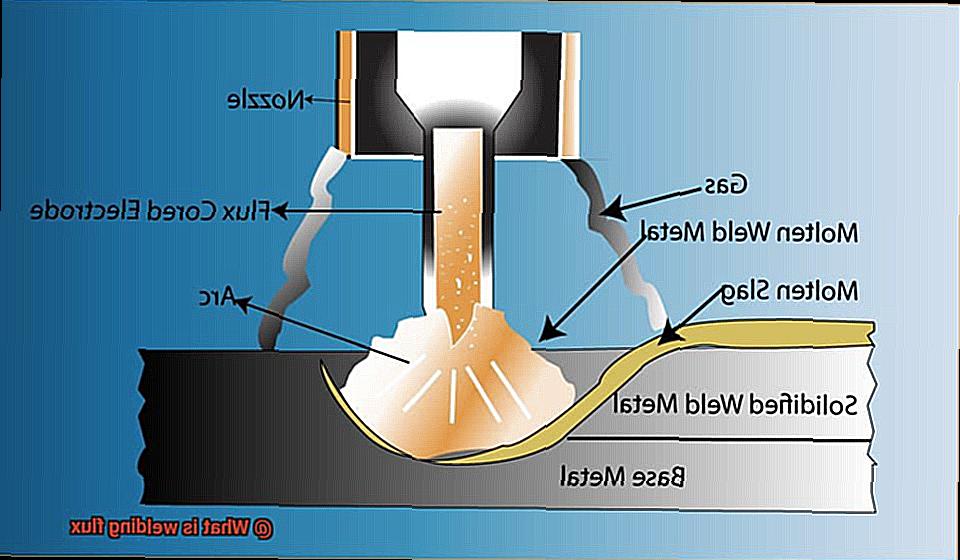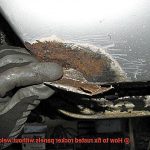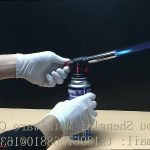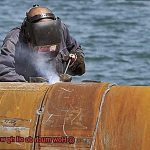Are you a welding enthusiast who loves to explore the science behind this fascinating process?
Then, you must be curious about the crucial role of welding flux. Welding flux is an essential material used in welding to protect the weld area from oxidation and other contaminants.
It plays a vital role in ensuring that the weld remains strong and durable. Welding flux typically comes in granulated form and is mixed with welding wire or rods.
During welding, the flux melts and forms a protective barrier over the weld pool. This barrier prevents harmful elements like oxygen and other contaminants from affecting the hot metal, which could weaken or damage the weld.
Different types of welding flux are available, each with unique properties tailored to specific welding applications. For instance, some fluxes are perfect for welding stainless steel, while others are best suited for aluminum or other alloys.
If you’re new to welding, you may not have encountered welding flux before. However, as you continue your journey towards becoming a welding expert, it will become an indispensable tool in your arsenal.
In this blog series, we’ll delve deeper into what welding flux is and how it works. We’ll also discuss its significance in different types of welding processes.
So buckle up – get ready to discover more about this exciting aspect of welding.
What is Welding Flux Made of?
Contents
Welding is an intricate process that involves a plethora of materials and techniques.
However, there is one crucial component that stands out from the rest – welding flux. But what exactly is welding flux made of?
Welding flux is a granular material applied to the surface of the metal being welded. Its primary function is to protect the weld area from atmospheric contamination, which can weaken the joint and result in substandard welds.
Nevertheless, welding flux does much more than that – it removes impurities from the metal and maintains the temperature of the weld area. The composition of welding flux comprises minerals, metals, and chemicals.
Silica is one of the most commonly used minerals in welding flux because it helps remove impurities from the metal being welded. Calcium fluoride and aluminum oxide are also widely used as they promote a robust bond between the metal being welded and the filler material.
But that’s not all; welding flux may also contain metals such as manganese, nickel, and iron, which stabilizes the arc during the welding process and improves the overall quality of the weld. Moreover, chemicals may be added to welding flux to alter its properties or performance.
For instance, some types of welding flux contain boron or titanium that increases the strength of the weld. The composition of welding flux varies based on its intended use and specific requirements.
It’s essential for welders to understand these different components to make informed decisions about which type of flux to use for a particular project.
The Three Main Functions of Flux in Welding
Flux is the unsung hero of welding, and its three main functions are essential to the welding process.
Firstly, flux acts as a protective barrier around the weld pool, shielding it from atmospheric contamination that can weaken the weld. When heated, metal reacts with the air, causing oxidation and other chemical reactions that can compromise the integrity of the weld.
Fortunately, flux prevents oxygen and other contaminants from reacting with the metal by forming a protective layer around the weld pool. Secondly, flux helps to remove impurities from the weld.
Impurities such as sulfur and phosphorus can lead to porosity and brittleness in the weld. Flux contains compounds that react chemically with these impurities, forming slag that floats on top of the weld pool and can be easily removed after welding.
Lastly, flux controls the shape and size of the weld bead by directing the flow of molten metal. By controlling the flow of metal, flux ensures that it fills any gaps or irregularities in the joint.
Additionally, it helps prevent excessive spattering and porosity in the process. It’s important to note that different types of flux are available for different welding processes such as GMAW, FCAW, SAW, and SMAW.
The type of flux used depends on its composition and intended use.
Do You Need Flux to Weld?
Welding is a complex process that requires precision and skill.
As a beginner, you may be wondering, “Do you need flux to weld?” The answer is, it depends on the type of welding you’re doing.
Flux is a powerful tool that helps protect the weld from contamination and oxidation. It also removes impurities and reduces porosity, resulting in high-quality welds.
However, not all welding processes require the use of flux. Let’s take a closer look at the four primary types of welding and how each one affects the need for flux:
Flux-Cored Arc Welding (FCAW)
FCAW uses a wire that contains flux, eliminating the need for an external application. This makes it an excellent option for outdoor or windy conditions.
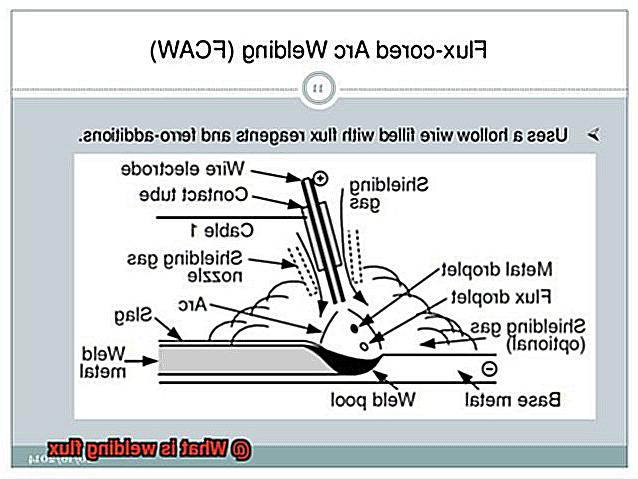
FCAW is popular in heavy industry applications because of its high deposition rate. 2.
Shielded Metal Arc Welding (SMAW) SMAW requires an external flux application to create a protective shield around the weld.
Applying flux manually can be time-consuming and inconvenient, but SMAW is commonly used in construction and repair applications. 3.
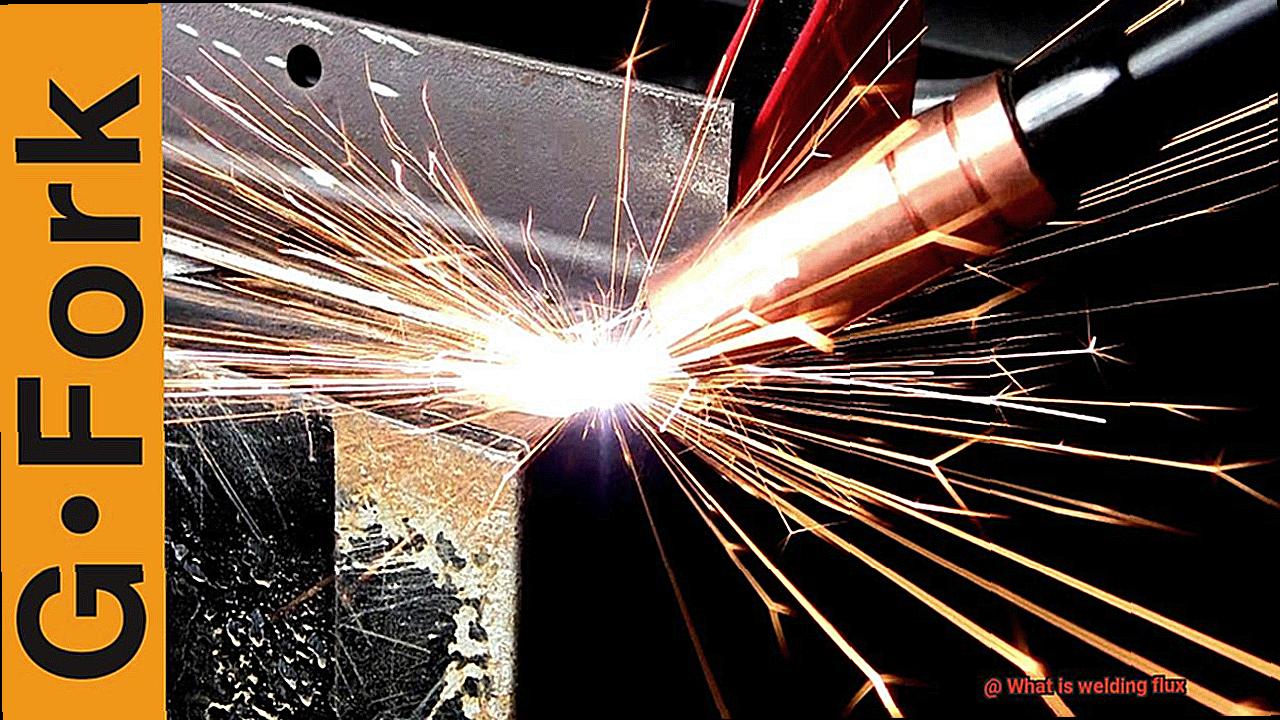
Metal Inert Gas (MIG) Welding MIG welding uses inert gases like argon or helium to shield the weld from contamination, making flux unnecessary.
This type of welding is popular for its versatility and ease of use, making it suitable for both hobbyists and professionals. 4.
Tungsten Inert Gas (TIG) Welding TIG welding also uses inert gases like argon or helium to shield the weld from contamination, making flux redundant.
TIG welding produces high-quality, precise welds that are ideal for decorative work. To sum up, whether or not you need flux to weld depends on the type of welding you’re doing.
If you’re using FCAW or SMAW, then yes, flux is necessary. However, if you’re using MIG or TIG welding, then you can skip the flux and use inert gases instead.
Remember that proper preparation and technique are essential in achieving a successful weld, regardless of whether you’re using flux or not. So don’t be afraid to experiment with different types of welding until you find what works best for you.
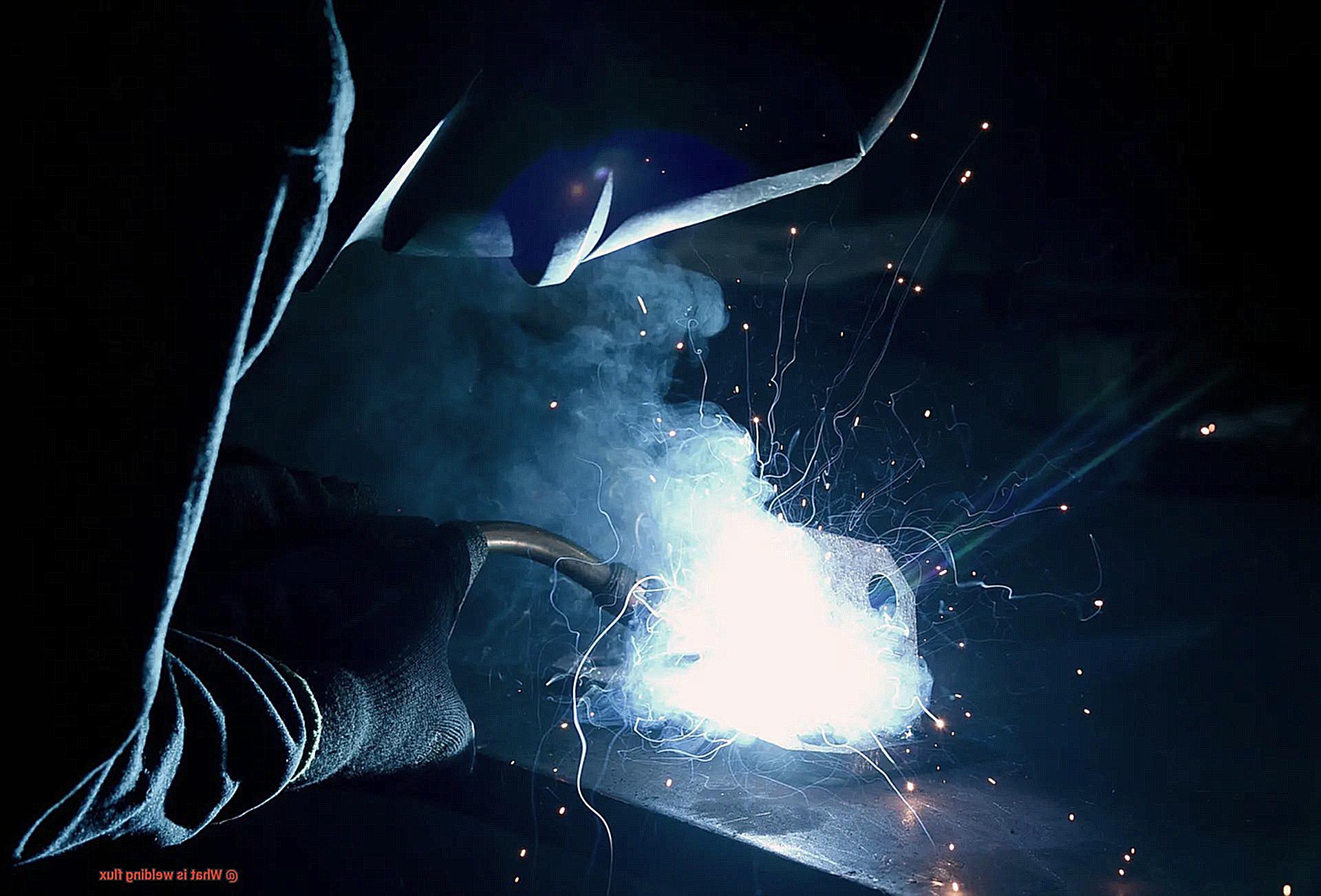
With this knowledge under your belt, you’ll be able to make informed decisions about which welding method suits your needs best.
Why is Weld Flux Important?
Welding can be intimidating, but understanding the importance of weld flux can help you achieve high-quality welds that will stand the test of time.
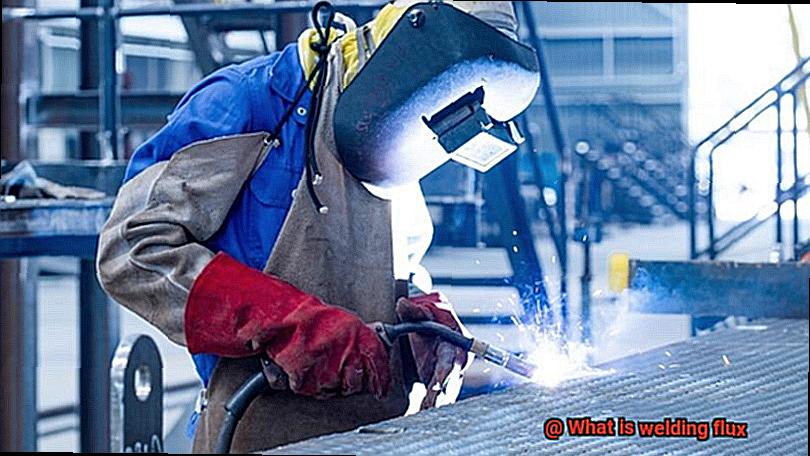
Weld flux is like the secret ingredient that makes your welding project a success, just like baking soda in a cake recipe. Weld flux is an essential component that ensures the quality and integrity of the weld.
Its primary function is to protect the molten weld pool from atmospheric contamination, preventing oxidation and reducing defects like porosity and cracks that could weaken the weld. Moreover, flux acts as a cleaning agent, removing impurities and oxides from the base metal surface.
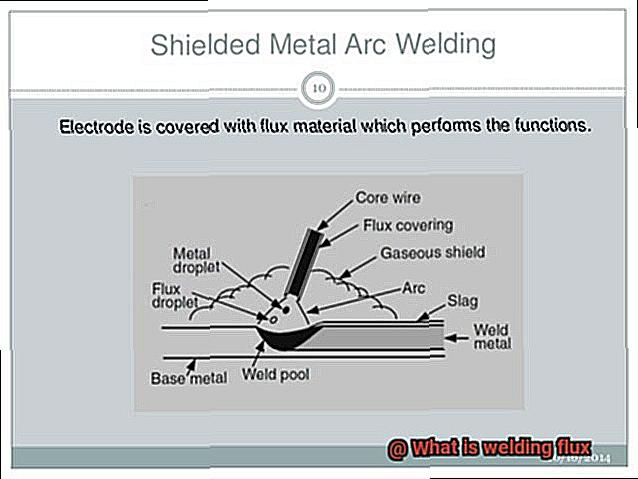
This cleaning action can improve weld penetration and adhesion, leading to stronger, more durable welds. Additionally, it helps regulate the rate of solidification, allowing the weld to cool evenly and reducing distortion.
It is crucial to ensure proper flux coverage for achieving high-quality, long-lasting welds that meet or exceed industry standards. Welding without flux can result in weaker, more brittle welds that are susceptible to corrosion.
It can also make it challenging to achieve a consistent bead profile and penetration depth. In summary, weld flux plays a crucial role in welding by protecting the molten pool from contamination, cleaning the base metal surface, and regulating solidification rates.
With the right type and amount of flux, you can create high-quality welds that are strong, durable, and meet industry standards.
Different Types of Flux Materials
Welding is an art that requires precision and skill, much like cooking a delicious meal.
And just like a chef knows the importance of using the right ingredients, a skilled welder understands that choosing the correct flux material is crucial for creating strong and durable welds. Flux materials are like secret ingredients that protect the weld pool from contamination, clean the base metal surface, and regulate solidification rates.
There are various types of flux materials available, each designed for specific welding processes. Basic flux is one of the most commonly used types and is composed of lime, calcium fluoride, and other minerals.
It’s perfect for applications that require high levels of heat, such as when welding thick metal plates or cast iron. Acidic flux, made up of compounds like silica and borax, is ideal for projects that require a lower temperature and a more controlled welding process.
It’s often used in applications like brazing or soldering. Specialized flux materials are also available for specific welding processes such as gas tungsten arc welding (GTAW), metal inert gas (MIG) welding, or submerged arc welding (SAW).
These materials are formulated to provide optimal performance and to help achieve the desired results for each particular welding process. Choosing the right type of flux material depends on several factors such as the type of metal being welded, the thickness of the metal, and the desired outcome.
Welders must carefully consider these factors to ensure they achieve the best results possible. In conclusion, just like how a chef uses the right ingredients to create a delicious meal, a skilled welder uses the correct flux material to create high-quality welds.
Different types of flux materials allow welders to choose the best option for each specific welding process to achieve optimal performance and results.
How to Use Welding Flux Properly
Welding flux is a crucial element in producing high-quality welds. It not only helps to clean the surface of the metal but also removes impurities, protects the metal from oxidation during the welding process, and improves the wetting action of the molten metal. In this blog post, we will discuss how to use welding flux properly in five sub-sections.
Subtopic 1: Choosing the Right Type of Welding Flux
Choosing the right type of welding flux is critical for producing high-quality welds. There are different types of welding flux, including acidic, basic, and neutral fluxes. Selecting the appropriate flux depends on the base metal being welded, the type of welding process being used, and the specific application of the weld. Acidic fluxes are typically used for welding steel, while basic fluxes are used for welding cast iron and other metals. Neutral fluxes can be used for a variety of metals.
Subtopic 2: Preparing Your Workpiece
Before applying welding flux, it is crucial to prepare your workpiece correctly. This involves cleaning the surface thoroughly to remove any dirt, rust, or other impurities that may interfere with the welding process. It is also important to ensure that there is no moisture on the surface as this can cause porosity in the weld. Proper preparation of the workpiece ensures that the welding flux can work effectively to produce a strong weld.
Subtopic 3: Applying Welding Flux
Once your workpiece is properly prepared, you can apply the welding flux. It is essential to follow the manufacturer’s instructions carefully when applying the flux. Flux can be applied using a brush or by sprinkling it over the surface of the workpiece. It is important to apply an even layer of flux, ensuring that all areas are covered. Applying too much or too little flux can affect the quality of the weld.
Subtopic 4: Maintaining Consistent Heat
During the welding process, it is crucial to maintain a consistent heat source to prevent overheating or burning off the flux before it has a chance to do its job. Overheating can weaken the joint and lead to a poor quality weld. It is essential to monitor the heat source and adjust it as necessary to maintain a consistent temperature throughout the welding process.
Subtopic 5: Cleaning Up Residue
After completing the weld, it is important to remove any excess flux residue and clean the surface thoroughly. Leaving excess residue on the surface can cause corrosion and weaken the joint over time. Proper cleaning ensures that your welds are not only strong but also durable.
In conclusion, using welding flux properly is critical for achieving strong and reliable welds. By selecting the appropriate type of flux for your application, preparing your workpiece correctly, applying an even layer of flux, maintaining consistent heat during welding, and cleaning up excess residue after welding, you can ensure that your welds meet even the most demanding standards.
zozvECWvcjk” >
Conclusion
To sum it up, welding flux is a vital component in the welding process that shields the weld area from oxidation and other impurities.
It also removes contaminants from the metal and maintains the temperature of the weld area. Different types of welding flux are available for specific welding applications, so it’s crucial to understand their composition and functions.
Achieving high-quality welds that meet industry standards requires careful consideration of factors such as metal type, thickness, and desired outcome when selecting the appropriate flux. Proper preparation of the workpiece, even application of flux, consistent heat during welding, and cleanup after welding are all critical steps to using welding flux effectively.
Armed with this knowledge, you’ll be able to make informed decisions about which type of flux to use for each particular application.
